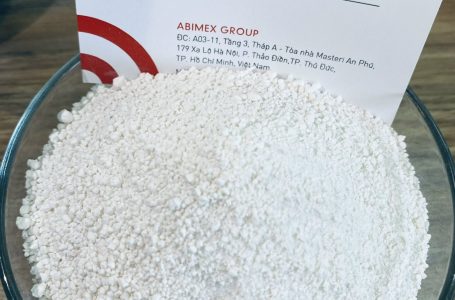
In the world of ice cream production, achieving the perfect texture, flavor, and stability is crucial. Many ingredients contribute to the smooth, creamy experience consumers love. One ingredient that has recently gained attention is modified tapioca starch. This versatile starch, derived from cassava, offers several surprising benefits when used in ice cream recipes. Let’s explore seven key advantages that make modified tapioca starch a game-changer for ice cream makers.


1. Enhances Creaminess and Mouthfeel
Creaminess is the hallmark of a great ice cream. Modified tapioca starch improves texture by mimicking fat molecules, giving the ice cream a rich, indulgent mouthfeel—even in low-fat or low-calorie formulations. It acts as both a thickener and stabilizer, ensuring that the product maintains a consistent, smooth texture throughout its shelf life. This makes it an ideal ingredient for premium ice cream products, helping brands to deliver indulgence even with reduced fat content.
2. Improves Freeze-Thaw Stability
Ice cream often experiences temperature fluctuations during storage and transport, which can lead to the formation of ice crystals. These ice crystals degrade the smooth texture, turning creamy ice cream into an icy, unappealing product. Modified tapioca starch effectively binds water molecules, preventing the formation of large ice crystals. This helps the ice cream retain its creaminess, even after multiple freeze-thaw cycles. As a result, manufacturers can deliver a consistently high-quality product to consumers, regardless of the challenges of distribution.
3. Boosts Stability and Reduces Syneresis
Syneresis, or the separation of water from a gel, is a common issue in frozen desserts. This can lead to an undesirable texture and negatively impact the consumer experience. Modified tapioca starch acts as a stabilizer, helping to prevent water separation, which in turn maintains the structural integrity of the ice cream. This stability is especially important in maintaining product consistency over time, ensuring that consumers always enjoy the perfect texture, whether they open the ice cream on day one or weeks later.
4. Provides Clean Label Solutions
Consumers are becoming increasingly conscious of the ingredients in their food, driving demand for more natural and “clean label” products. Modified tapioca starch, often seen as a non-GMO, natural ingredient, provides a great alternative to synthetic additives. It enables manufacturers to replace artificial stabilizers and emulsifiers with a more transparent ingredient, aligning with the growing demand for cleaner, simpler labels. This is particularly attractive to health-conscious consumers, making it easier for brands to appeal to a wider market while maintaining product quality.
5. Reduces Fat Content Without Sacrificing Texture
The demand for healthier, lower-fat ice cream options has grown significantly, but achieving the right texture in low-fat products can be challenging. Modified tapioca starch allows manufacturers to reduce fat content without compromising the creamy, rich texture consumers expect from premium ice cream. This is particularly beneficial for brands looking to target health-conscious consumers who still want to enjoy indulgent desserts. By incorporating this starch, manufacturers can create ice cream that satisfies both health and indulgence, balancing both aspects seamlessly.
6. Improves Flavor Release
While modified tapioca starch is often praised for its texture-enhancing properties, it also improves the release of flavors. By creating a smoother texture, this starch allows the flavors in the ice cream to be released more evenly when it melts in the mouth. This means that each bite is packed with more intense and consistent flavors, whether it’s chocolate, vanilla, or fruit-based varieties. The enhanced flavor release adds an extra layer of satisfaction for consumers, making it a key ingredient in crafting a memorable ice cream experience.
7. Cost-Effective and Versatile
Finally, modified tapioca starch is a cost-effective solution for ice cream producers. Its multifunctionality—acting as a thickener, stabilizer, and fat replacer—means fewer ingredients are needed to achieve the desired result. This not only simplifies production but also helps reduce costs. Additionally, because it’s versatile across various types of ice cream, from premium to budget-friendly options, it is an excellent ingredient for any manufacturer looking to optimize both product quality and cost efficiency.


Conclusion
The benefits of modified tapioca starch in ice cream production are undeniable. From enhancing texture and flavor to supporting clean label initiatives and improving stability, this ingredient offers numerous advantages for manufacturers. By incorporating modified tapioca starch into your recipes, you can create products that meet the growing demand for healthier, more natural options, while still delivering on taste, texture, and overall quality. It’s clear why this ingredient is becoming a staple in modern ice cream production.







